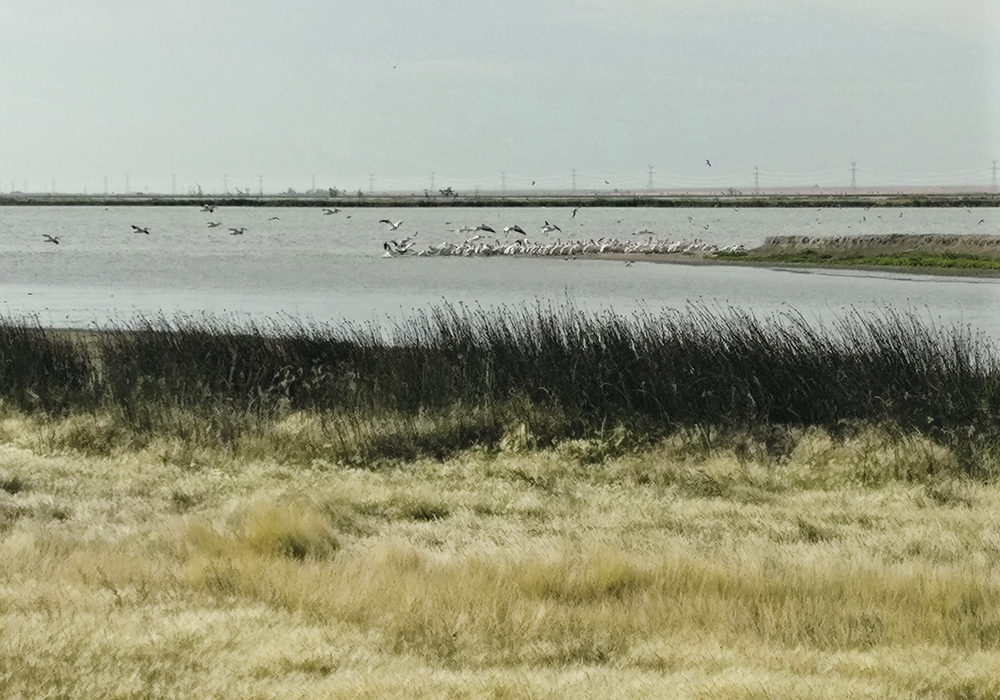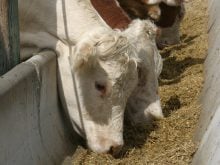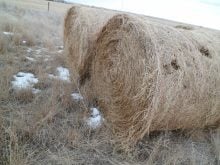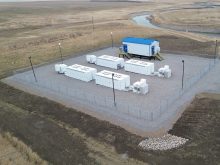Alberta Utilities Commission rules that bird death numbers would be too high if project near Frank Lake was to go ahead
A proposed solar project containing about 435,000 panels that was slated for a site near a lake listed as one of Canada’s most important areas for birds has been rejected by the Alberta Utilities Commission.
The 1,500-acre Foothills Solar Project was to have been built near Frank Lake east of High River, Alta. However, sunlight reflecting off the panels could potentially be confused for water by migratory and breeding birds, causing them to be killed or injured, said conservation specialist Ruiping Luo of the Alberta Wilderness Association (AWA).
Read Also
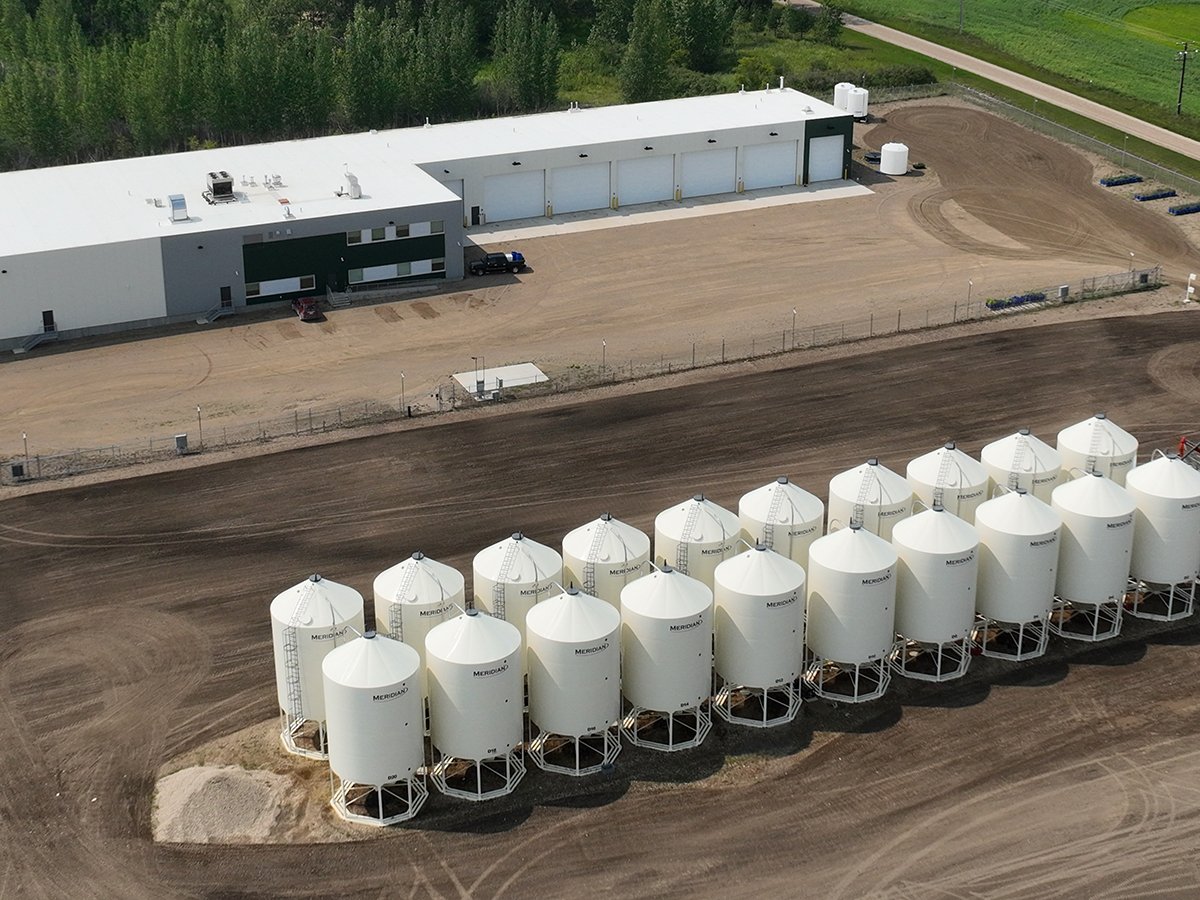
Saskatchewan firm aims to fix soil with compost pellets
In his business, Humaterra, Leon Pratchler is helping farmers maximize yields in the weakest areas of their fields through the use of a compost pellet.
“It’s a sensitive area that should be protected and while we understand that there needs to be solar development for Alberta to approach its net-zero carbon goals … we think that where these solar development projects are sited is really important and they shouldn’t be sited in very sensitive landscapes or very vulnerable areas for wildlife.”
The 150-megawatt Foothills Solar Project would have been the largest such development by Elemental Energy Renewables Inc. in Alberta, with the surface area of the solar panels totalling 270 to 300 acres.
“Elemental Energy is in the business of building renewable energy projects that benefit our environment, our communities, our partners, and our future generations,” said director of project development Daniel Eaton in an email April 21.
“While we are disappointed in the decision, we are continuing to work with our project partners Cold Lake First Nations and other stakeholders to review the AUC decision and identify opportunities to move the Foothills Solar Project forward.”
Elemental Energy has two avenues to appeal the decision, including filing an application for review and variance to the AUC within 60 days. It also has 30 days to file an appeal to the Alberta Court of Appeal, although the grounds for both avenues are relatively narrow, said Geoff Scotton, senior communications advisor for the AUC.
The project was slated to be undertaken by company subsidiary Foothills Solar GP Inc. on privately owned cultivated and hay pastureland in Foothills County, said a report by the AUC detailing its decision April 20. The commission partly found the project could have positive socioeconomic benefits for Cold Lake First Nations in northeastern Alberta, helping promote Indigenous reconciliation with the Crown.
“Foothills Solar submitted that the project would be in the public interest for a variety of reasons, including reduced greenhouse gas emissions and other local economic benefits…. However, the potential for the project to result in high bird mortalities, and the impacts of the project on the Frank Lake IBA and the social and environmental values that it represents are unacceptable.”
IBA stands for Important Bird and Biodiversity Area, which was designated under an international conservation program co-ordinated by BirdLife International. The initiative described Frank Lake as one of about 600 IBAs across Canada and the most important wetland in southwestern Alberta for breeding waterbirds.
A best management practice under a wildlife directive by the Alberta government said solar projects shouldn’t occur within 1,000 metres of a wetland-based IBA, said the report. However, about 50 percent of the Foothills Solar Project was directly sited within the Frank Lake IBA, with about 80 percent within the recommended setback from the IBA boundary, it said.
Species that use Frank Lake and the surrounding area range from trumpeter and tundra swans to peregrine falcons and short-eared owls. Waterfowl such as ducks often use nearby land such as cultivated fields to nest and feed, said Luo.
She hoped the AUC’s decision will create an important precedent for future renewable energy development in sensitive habitats “because there’s been a lot of concern about projects going in things like native grasslands where we’ve already lost a lot of the native grasslands of Alberta.”
Rural Albertans are currently grappling with a boom in industrial-sized solar and wind projects. Agriculture and Irrigation Minister Nate Horner said March 21 the provincial government plans to look at ways to balance renewable energy development with protecting farmland.
“There’s going to be a big consultation in this province regarding renewables, regarding agricultural land, regarding our electricity grid. It’s complicated, it’s big, it’s going to involve at least five ministries.”
The provincial government needs to place a moratorium on solar projects on certain types of farmland, said Paul McLauchlin, president of Rural Municipalities of Alberta, during an earlier interview. It should especially halt projects on land with irrigation potential involving Class 1 or Class 2 soil, he said.
Foothills County submitted evidence to the AUC that the Foothills Solar Project didn’t meet the requirements of the county’s agricultural land use bylaw and its municipal development plan, said the report.
“Further, Foothills County raised concerns with decommissioning and reclamation of the land if the project was approved and the loss of the use of high-quality agricultural lands.”
Luo said the AWA mostly agreed that prime farmland needs to be protected because of concerns ranging from the impact on the environment to the importance of food production.
“If there’s drought conditions, especially with climate change, we might be losing some of our more productive lands,” she said.
“So, there is this idea that solar panels and renewable energy shouldn’t be sited on areas that have a lot of productive, fertile soil, and we think that the best sites for these are usually brownfields. They’re usually industrial areas that have already been developed and that aren’t being used for other purposes.”


